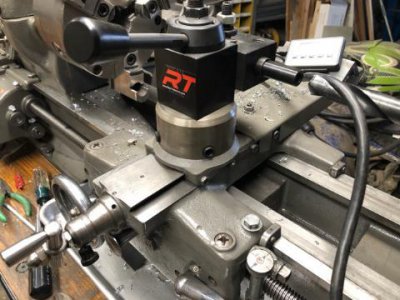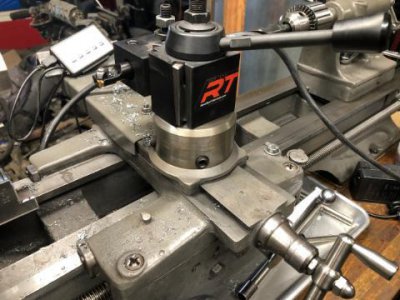- Joined
- Feb 3, 2023
- Messages
- 10
I've seen a number of posts around the net that were about deleting the compound to increase rigidity. Thought I'd give it a try. An hour of turning, boring, threading, and I came up with this. Rigidity is WAY better. No movement what so ever. Plus, if I ever need to use the compound again, all I have to do it remove the set screws and the original compound goes right back on. If you are having rigidity issues, I'd definitely
current resident, you might consider drawing up the solid spacer and putting it into Downloads to save someone else the trouble of determining the exact height and other details of the compound replacement spacer. I'll have to clear it with the head admin but I think that would be worth a free year of upgrade to Downloads. (donor) status.
recommend this.

current resident, you might consider drawing up the solid spacer and putting it into Downloads to save someone else the trouble of determining the exact height and other details of the compound replacement spacer. I'll have to clear it with the head admin but I think that would be worth a free year of upgrade to Downloads. (donor) status.
recommend this.


Last edited by a moderator:

